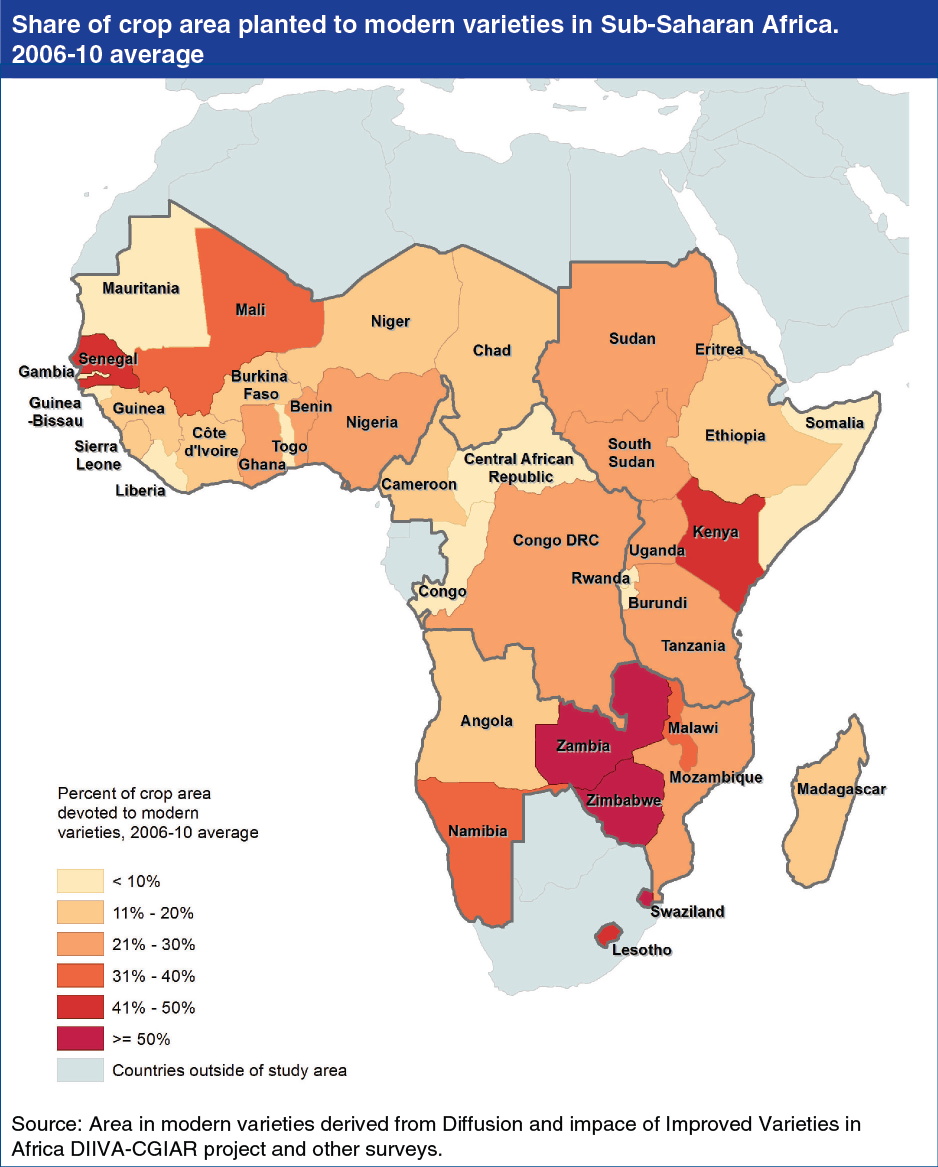Cultivation of modern crop varieties helps improve food security in Sub-Saharan Africa
- by Stacey Rosen and Birgit Meade
- 9/3/2014

Sub-Saharan Africa (SSA) remains the most food-insecure region in the world, but gains in crop yields associated with increased cultivation of modern varieties are leading to improved food availability and food security conditions. Because domestic grain production accounts for about 80 percent of supplies across SSA and grain yields are among the lowest in the world, boosting yields is key to improving food security in the region. Policy reforms and incentives for farmers have spurred adoption of new technologies, such as modern seed varieties. In Nigeria, Benin, Ghana, Senegal, Malawi, and Zambia, 27-55 percent of crop area was devoted to modern varieties in 2006-10; in each of these countries, grain yields have increased between 4 and 16 percent per year. Scenario analysis indicates the potential for significant additional improvements in SSA food security if more countries are able to increase adoption of modern crop varieties. This chart and analysis is based on Productivity Impacts on Food Security in Sub-Saharan Africa, an article in International Food Security Assessment, 2014-2024.

